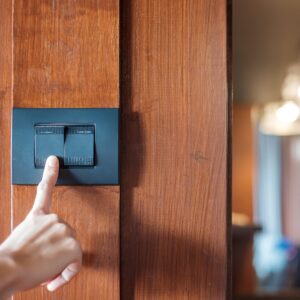The average American household pays over $1,300 a year in energy bills. Depending on where you live, you could see much higher costs during prime heating and cooling seasons. Each home and family has a unique energy profile depending on the size and needs of the household. No matter what size house or family you have, however, there are some things to consider when looking at energy usage and costs.
As a general rule, everyone knows to turn out the lights when they leave a room and turn off the TV when it isn’t being used. Our parents and grandparents have been yelling at us about these things since we were kids. Aside from these basic strategies, however, there are a few more things that you can do to cut down your energy bills.
Typically, your appliances and HVAC system are the biggest energy consumers in your house. Refrigerators, dryers, and air conditioners require a lot of energy to operate. Some experts estimate that a heating and cooling system can account for half of each month’s energy bill. As such, the key to keeping your energy bills low is to reduce the amount of energy used by your system. Let’s look at ways that you improve your home’s efficiency for year-round savings on your energy bills.
HVAC Maintenance

As discussed, one of the major energy consumers in your home is your HVAC system. For many homeowners, the summer and winter seasons usher in some of the highest utility bills of the year. This is due to the increased demands on your HVAC system to keep your home at a comfortable temperature. One of the obvious ways to lower your energy costs is to adjust the thermostat slightly during the peak hours of these seasons. Aside from that, however, regular HVAC maintenance can go a long way toward lowering your electric bills.
Changing air filters frequently is a small way to make a big impact on your energy bills. Dirty filters will cause your HVAC system to work harder and use more energy to circulate air throughout the house. Aside from this, however, regular HVAC maintenance at least twice a year can greatly improve your system’s efficiency. Before the summer and winter seasons, you can have a qualified HVAC technician inspect, clean, and tune up your system. This will ensure that your equipment is operating at maximum efficiency and well equipped for the demands of the season changes.
Programmable Thermostat

Installing a programmable thermostat is a great way to reduce energy consumption around your home. With older model thermostats, the setting is either off or on. This means that you usually have to heat or cool your house even when you aren’t there. A programmable thermostat can regulate your HVAC system to run less when you aren’t home or when you are sleeping. Many manufacturers of programmable and smart thermostats boast energy savings of up to 20 percent.
Ceiling Fans

During the summer months, a ceiling fan will move cool air around the home to reduce the need for constant air conditioning. While summer seems like the best time to use a fan, many people overlook their benefits in the winter. Hot air rises, and as a result, your heat pump or furnace produces heat that gets trapped against your ceiling. However, you can combat this by changing your ceiling fan to winter mode and having it spin in the opposite direction. When your fan spins clockwise in winter, it creates an updraft that circulates the trapped heat against your ceiling around the room. Similarly, you might not need to crank the heat up in the winter when you have a fan running.
Energy efficiency is a major concern for any homeowner seeking to lower electric bills. By maintaining your HVAC unit and using your thermostat and ceiling fans to regulate temperatures, you can put a significant dent in your electric costs.





